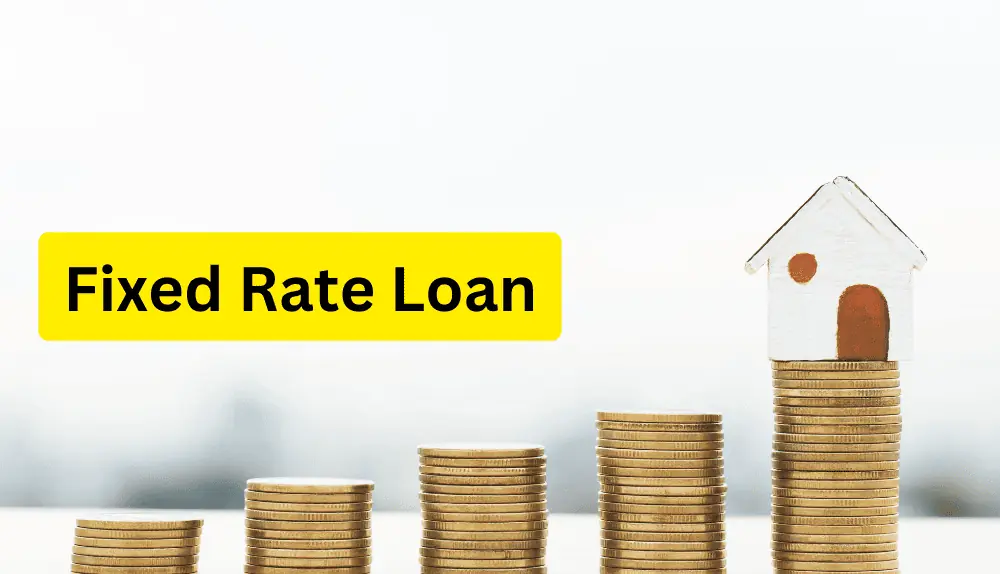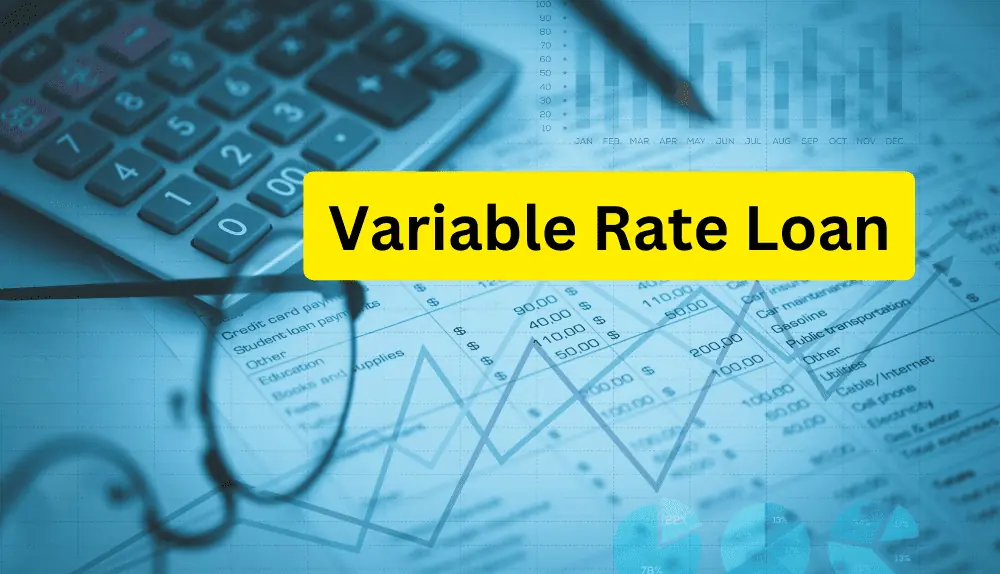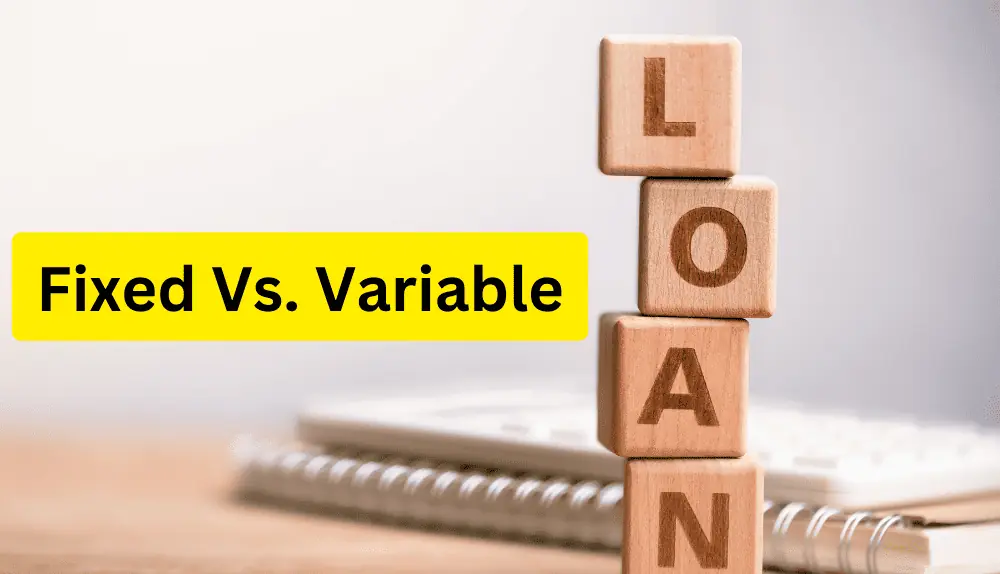When borrowing money, understanding the ins and outs of loan interest rates is essential. Among the many factors to consider, one of the most crucial decisions is whether to opt for a fixed or variable interest rate. These two options can make a difference in your financial journey, dictating how much you’ll pay in interest over time and how stable your monthly payments will be. In this article, we’ll delve into the fascinating realm of loan interest rates, exploring the fixed rate loan vs variable rate loan and equipping you with the knowledge to make an informed choice. So, buckle up and get ready to uncover the secrets of loan interest rates!
What is a Fixed Rate Loan?
A fixed-rate loan is a type where the interest rate remains unchanged throughout the loan’s duration. This means that the borrower will pay the same interest rate from the beginning to the end of the loan term, resulting in consistent monthly payments.
The primary advantage of a fixed-rate loan is its predictability. Borrowers can accurately budget their finances since they know exactly how much they need to repay each month. This stability is particularly beneficial for long-term loans, such as mortgages, where borrowers may be making payments over several years or even decades.

Additionally, fixed-rate loans provide protection against potential interest rate hikes in the future. Even if market rates rise, the borrower’s interest rate remains unaffected, ensuring that their monthly payments stay the same.
However, one drawback of fixed-rate loans is that if market interest rates drop significantly, borrowers will be locked into higher rates and may miss out on potential savings. Refinancing is an option to explore in such cases, allowing borrowers to take advantage of lower rates by replacing their existing loan with a new one.
Overall, fixed-rate loans provide stability and peace of mind, making them a popular choice for individuals who prefer consistent monthly payments and protection against rising interest rates.
How Does Fixed Rate Loan Work?
A fixed-rate loan is a type of loan where the interest rate remains constant throughout the loan term. This section provides an overview of how fixed-rate loans work and their key features.
Determining the Interest Rate
The interest rate for a fixed-rate loan is determined at the time of borrowing and remains unchanged for the entire loan duration. Lenders consider various factors, such as the borrower’s credit history, market conditions, and the loan’s term, in setting the interest rate.
Consistent Monthly Payments
One of the main advantages of a fixed-rate loan is that borrowers can expect consistent monthly payments. Since the interest rate remains constant, the monthly payment amount remains the same throughout the loan term. This predictability makes it easier for borrowers to budget their finances and plan their repayment.
Protection against Interest Rate Fluctuations
Fixed-rate loans offer protection against interest rate fluctuations. Even if market rates increase, the borrower’s interest rate remains unaffected. This stability shields borrowers from the potential financial strain caused by rising interest rates, ensuring their monthly payments remain unchanged.
Limited Benefit from Interest Rate Decreases
While fixed-rate loans provide stability, they may not offer the same advantage when interest rates decrease. If market rates significantly drop, borrowers with fixed-rate loans may miss out on potential savings. In such cases, refinancing the loan or exploring other options can help take advantage of lower interest rates.
Prepayment and Early Repayment
Fixed-rate loans typically allow borrowers to make prepayments or repay the loan early. However, it’s important to review the loan agreement or consult with the lender to understand any prepayment penalties or fees that may be associated with early repayment.
Choosing the Right Fixed Rate Loan
When considering a fixed-rate loan, it’s important to compare offers from different lenders, review the terms and conditions, and assess your financial goals and circumstances. Additionally, understanding the loan’s total cost, including any fees or charges, is crucial for making an informed decision.
Fixed-rate loans provide borrowers with stability and predictability by offering a consistent interest rate and monthly payment throughout the loan term. While they protect against rising interest rates, borrowers may miss out on potential savings if market rates decline. Assessing personal financial needs and carefully evaluating loan terms will help determine whether a fixed-rate loan is the right choice.
What is a Variable Rate Loan?
A variable rate loan, also known as an adjustable rate loan, is a type of loan where the interest rate can fluctuate over the loan term. Unlike fixed-rate loans, where the interest rate remains constant, variable rate loans are tied to a benchmark interest rate, such as the prime rate or the London Interbank Offered Rate (LIBOR), which can change periodically.

The interest rate on a variable rate loan typically consists of two components: a benchmark rate and a margin. The benchmark rate is determined by market forces and can rise or fall based on economic conditions. The margin, set by the lender, remains constant throughout the loan term. When the benchmark rate changes, the interest rate on the variable rate loan adjusts accordingly.
The frequency of rate adjustments can vary depending on the loan agreement. Common adjustment periods include every month, quarter, or year. For example, a loan with a one-year adjustment period would have its interest rate revised once a year based on the prevailing benchmark rate.
Variable rate loans offer the potential for both savings and risks. When interest rates are low, borrowers can benefit from lower monthly payments. However, if rates rise, the borrower’s monthly payments can increase, potentially causing financial strain.
How Does a Variable Rate Loan Work?
A variable rate loan, an adjustable-rate loan, operates differently from a fixed-rate loan. In a variable-rate loan, the interest rate can change periodically during the loan term. Here’s a breakdown of how a variable rate loan works:
Initial Rate
When you take out a variable-rate loan, you typically start with an initial interest rate. This rate is often lower than the prevailing fixed interest rates at that time, making it an attractive option for borrowers.
Benchmark Rate
A variable loan’s interest rate is tied to a benchmark rate, such as the prime rate or LIBOR. This benchmark rate serves as a reference point and is influenced by various economic factors, such as central bank policies, market conditions, and inflation.
Margin
The lender adds a margin or a fixed percentage to the benchmark rate. For example, if the benchmark rate is 3% and the lender’s margin is 2%, the interest rate on your loan would be 5%. The margin is predetermined and remains constant throughout the loan term.
Rate Adjustment Period
Variable rate loans have specific intervals at which the interest rate can change. Depending on the loan agreement, these periods can range from monthly to annually. For instance, a loan with a one-year adjustment period would have its interest rate reviewed and potentially adjusted once every year.
Rate Adjustment
When the adjustment period arrives, the lender examines the current benchmark rate. If the benchmark rate has changed, the interest rate on your loan will be recalculated based on the new rate. This adjustment can result in either an increase or a decrease in your interest rate.
Impact on Monthly Payments
As the interest rate changes, your monthly payments will be affected. Your monthly payments will increase if the interest rate increases, potentially causing a higher financial burden. Conversely, if the interest rate decreases, your monthly payments may decrease, providing some relief.
Caps and Limits
Variable rate loans often come with certain protections called caps and limits. These are designed to prevent dramatic rate increases or decreases. Common caps include periodic adjustment caps, which limit how much the interest rate can change in a single adjustment period, and lifetime caps, which limit how high the interest rate can go over the entire loan term.
It’s important to note that the terms and conditions of variable-rate loans can vary between lenders and loan products. To assess the potential risks and benefits associated with a variable-rate loan, thoroughly reviewing and understanding the loan agreement, including the adjustment caps, frequency, and limitations, is crucial.
What are Interest Rate Caps?
Interest rate caps are limitations or restrictions placed on the amount and frequency by which the interest rate can change on a variable rate loan. These caps are designed to protect borrowers against large and sudden fluctuations in their loan’s interest rate. Here are the common types of interest rate caps:
Periodic Adjustment Cap
This cap limits the amount the interest rate can change during each adjustment period. For example, if the periodic adjustment cap is set at 2% and the benchmark rate increases by 1.5%, the interest rate on your loan can only rise by a maximum of 2%, even if the benchmark rate increase exceeds that.
Lifetime Cap
The lifetime cap, also known as the overall cap or ceiling, imposes a maximum limit on how high the interest rate can go over the entire loan term. For instance, if the lifetime cap is set at 5%, even if the benchmark rate rises by 7%, your interest rate will not increase beyond the specified cap.
Initial Adjustment Cap
Some variable rate loans have an initial adjustment cap that limits the interest rate change at the first adjustment after the loan origination. This cap provides additional protection during the initial period, typically the first adjustment year.
These caps provide borrowers with predictability and protection against significant interest rate hikes. By setting limits on interest rate changes, borrowers can better plan their finances and avoid sudden and unmanageable increases in their monthly payments.
Fixed Rate Loan Vs Variable Rate Loan – Major Differences
The main difference between a variable rate loan and a fixed rate loan lies in how the interest rate is determined and whether it remains constant or fluctuates over time. Here’s a breakdown of the key distinctions between the two:
Interest Rate Stability
- Fixed Rate Loan: With a fixed rate loan, the interest rate remains unchanged throughout the loan term. This means borrowers will have consistent monthly payments, providing stability and predictability in their budgeting and financial planning.
- Variable Rate Loan: In contrast, a variable rate loan has an interest rate that can change periodically. The rate is typically tied to a benchmark rate, such as the prime rate or LIBOR, and can fluctuate based on market conditions. As a result, the monthly payments can vary, potentially making budgeting more challenging.
Response to Market Conditions
- Fixed Rate Loan: The interest rate on a fixed rate loan is set at the time of borrowing and remains the same regardless of changes in the market interest rates. Borrowers are protected from future interest rate increases but do not benefit from potential rate decreases.
- Variable Rate Loan: The interest rate on a variable rate loan responds to changes in the benchmark rate. If the benchmark rate rises, the interest rate on the loan will increase, resulting in higher monthly payments. Conversely, if the benchmark rate decreases, the interest rate and payments will decrease, potentially providing borrowers savings.
Risk and Flexibility
- Fixed Rate Loan: Fixed rate loans offer stability and protection against rising interest rates. Borrowers know exactly what they will pay each month, which can help with long-term financial planning. However, fixed rate loans may not provide the same flexibility to take advantage of lower rates if market conditions change.
- Variable Rate Loan: Variable rate loans come with the risk of interest rate fluctuations. While borrowers may benefit from lower rates during periods of economic stability or rate decreases, they also face the potential for higher rates and payments if market conditions change. Variable rate loans are suitable for those willing to take on more risk and have the flexibility to handle potential payment increases.
Ultimately, choosing between a variable rate loan and a fixed rate loan depends on individual preferences, financial goals, and market conditions. Fixed rate loans offer stability, while variable rate loans provide the possibility of savings or increased costs based on market fluctuations. It’s important to carefully evaluate your financial situation, risk tolerance, and future plans to make an informed decision.
Variable Vs. Fixed Rate Loan: Which Option is Better?
Determining whether a variable or a fixed rate loan is better depends on various factors, including your financial goals, risk tolerance, and market conditions. Here are some considerations to help you decide:
Fixed Rate Loan
- Stability and Predictability: With a fixed rate loan, you’ll have the certainty of consistent monthly payments throughout the loan term. This stability can be advantageous if you prefer a unchanged budget and want protection against future interest rate increases.
- Long-Term Planning: Fixed rate loans benefit long-term loans, such as mortgages, where you’ll have the peace of mind of knowing your monthly payments won’t change, allowing for easier financial planning.
- Higher Initial Interest Rate: One potential downside of fixed rate loans is that the initial interest rate is often higher compared to the initial rate of a variable rate loan. However, this fixed rate can be advantageous if interest rates rise in the future.
Variable Rate Loan
- Potential for Savings: Variable rate loans can provide savings if market interest rates decrease over time. When rates are low, your monthly payments can be lower, potentially resulting in cost savings.
- Risk and Uncertainty: Variable rate loans come with the risk of interest rate fluctuations. If interest rates rise, your monthly payments will increase, potentially causing financial strain. Consider whether you have the financial flexibility to handle potential payment increases.
- Shorter-Term Loans: Variable rate loans can be suitable for shorter-term loans or if you plan to sell or refinance the loan in the near future. This way, you can take advantage of the initial lower interest rate without exposing yourself to significant long-term risk.
Ultimately, the better option depends on your individual circumstances and preferences. If you prioritize stability and want to know exactly what your payments will be throughout the loan term, a fixed rate loan may be preferable. If you’re comfortable with some level of risk and believe that interest rates may decrease, a variable rate loan could offer potential savings. Consider consulting with a financial advisor or mortgage professional who can evaluate your situation and guide you toward the best option with your needs.
Conclusion
Choosing between a variable-rate loan and a fixed-rate loan is a decision that should be based on careful consideration of various factors. Both options have advantages and disadvantages, and the better choice depends on your unique circumstances and preferences. Fixed-rate loans provide stability and predictability with consistent monthly payments, offering peace of mind and long-term planning capabilities. On the other hand, variable-rate loans provide the potential for savings if interest rates decrease but come with the risk of higher payments if rates rise. Assessing your financial goals, risk tolerance, and current market conditions is essential in making an informed decision.
It’s recommended to consult with financial professionals who can provide guidance tailored to your specific situation. Ultimately, the choice between a variable-rate loan and a fixed-rate loan should align with your financial objectives and comfort level with potential fluctuations in interest rates.
Frequently Asked Questions (FAQs)
Which type of loan is more suitable for long-term planning?
A fixed rate loan is generally more suitable for long-term planning because it offers stability and consistent monthly payments over the entire loan term.
Can the interest rate on a fixed rate loan change after it is taken out?
No, the interest rate on a fixed rate loan remains the same from the time of borrowing until the loan is fully repaid, regardless of any changes in market interest rates.
Are variable rate loans riskier than fixed rate loans?
Variable rate loans carry more risk due to the potential for interest rate fluctuations. If rates rise, borrowers may experience higher monthly payments, whereas if rates decrease, borrowers may benefit from lower payments.
Can I switch from a variable rate loan to a fixed rate loan or vice versa?
In some cases, it may be possible to refinance a loan to switch from one type to another. However, it is important to consider associated costs, such as refinancing fees and potential penalties, and to evaluate if the switch aligns with your financial goals.
Which type of loan offers protection against rising interest rates?
A fixed rate loan protects rising interest rates since the rate is locked in at the time of borrowing and does not change over the loan term.

